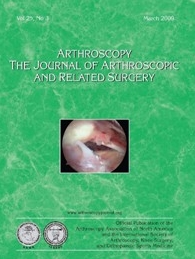
SPORTS MEDICINE
Bioabsorbable vs metallic interference screws in ACLR; complications and clinical outcome
This report has been verified
by one or more authors of the
original publication.
Arthroscopy. 2015 Mar;31(3):561-568
Three meta-analyses with overlapping studies were included in this review comparing outcomes after anterior cruciate ligament (ACL) reconstruction with bioabsorbable versus metallic interference screws. Between 8 and 11 studies were included in each meta-analysis, and performed analyses on outcomes such as the Lysholm score, International Knee Documentation Committee (IKDC) score, Tegner score, KT-arthrometer results, pivot-shift test, radiological examination of tunnel widening, and postoperative complications. All three included studies reported no significant differences in clinical or functional outcome measures. There was, however, a higher rate of complications noted with bioabsorbable interference screw fixation, such as knee effusion, femoral tunnel widening, and screw breakage.
Unlock the full ACE Report
You have access to {0} free articles per month.Click below to unlock and view this {1}
Unlock NowCritical appraisals of the latest, high-impact randomized controlled trials and systematic reviews in orthopaedics
Access to OrthoEvidence podcast content, including collaborations with the Journal of Bone and Joint Surgery, interviews with internationally recognized surgeons, and roundtable discussions on orthopaedic news and topics
Subscription to The Pulse, a twice-weekly evidence-based newsletter designed to help you make better clinical decisions
Exclusive access to original content articles, including in-house systematic reviews, and articles on health research methods and hot orthopaedic topics
Or upgrade today and gain access to all OrthoEvidence content for just $1.99 per week.
Already have an account? Log in


Subscribe to "The Pulse"
Evidence-Based Orthopaedics direct to your inbox.
{0} of {1} free articles
Become an OrthoEvidence Premium Member. Expand your perspective with high-quality evidence.
Upgrade Now













































































